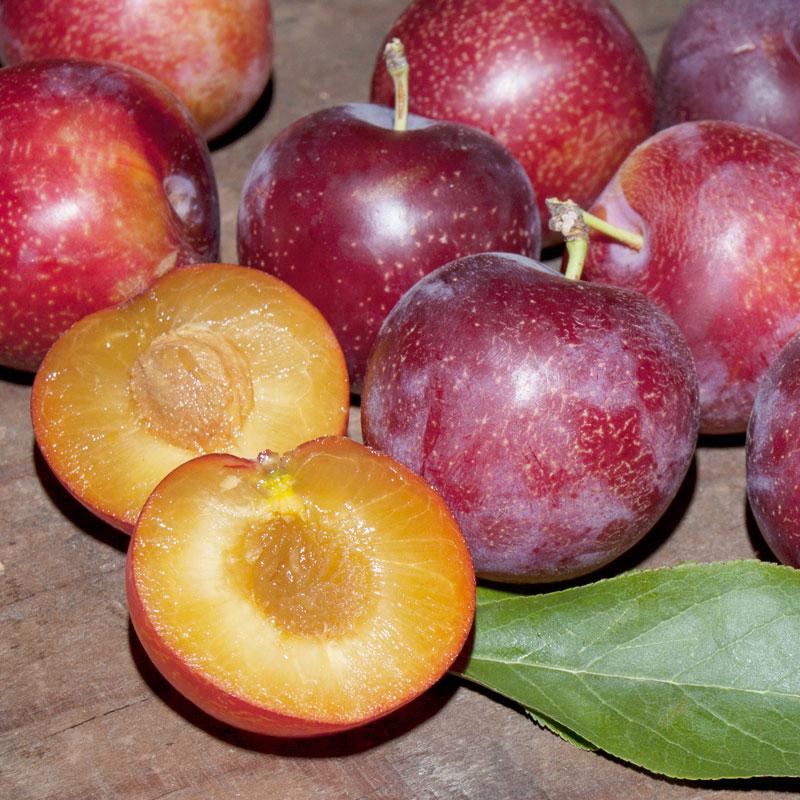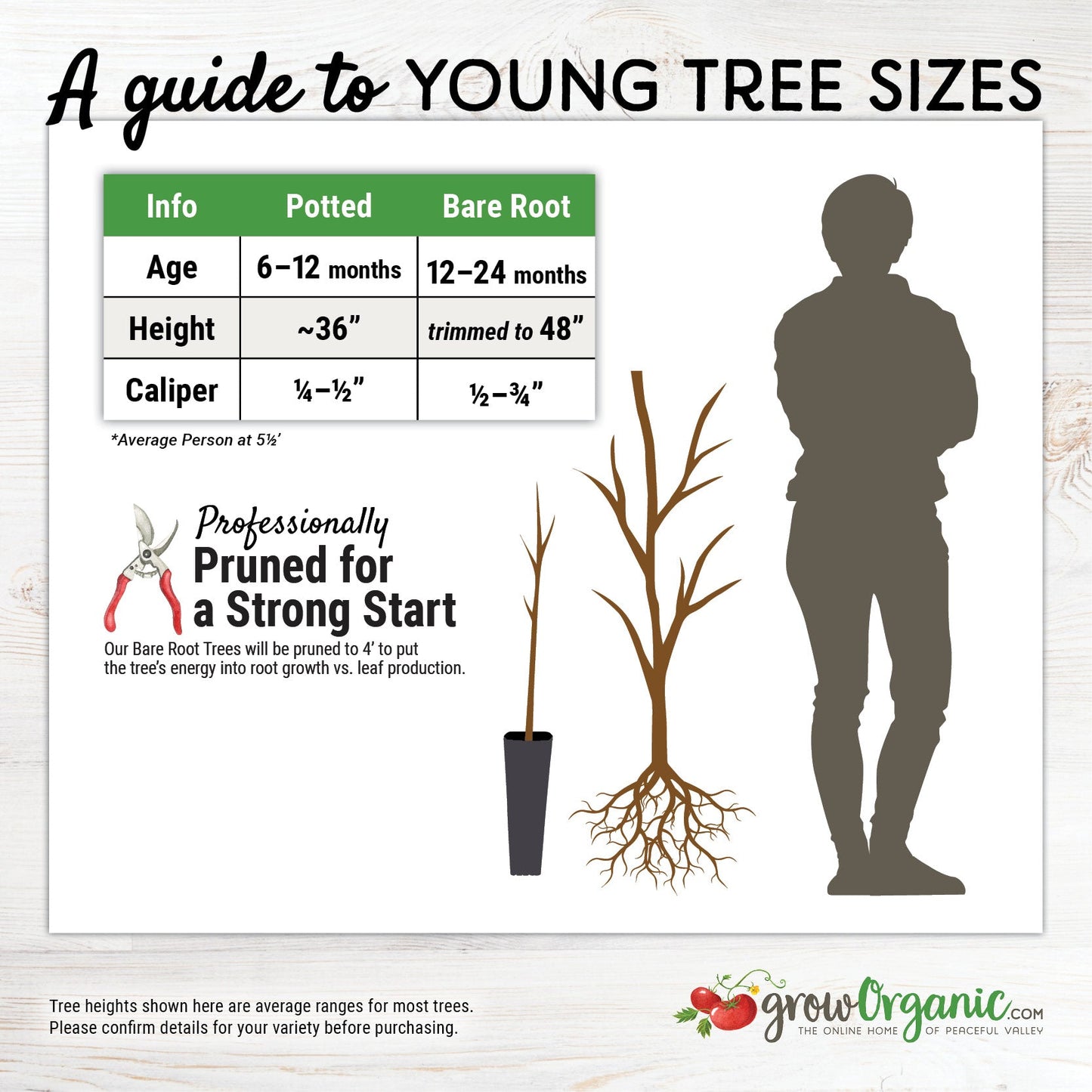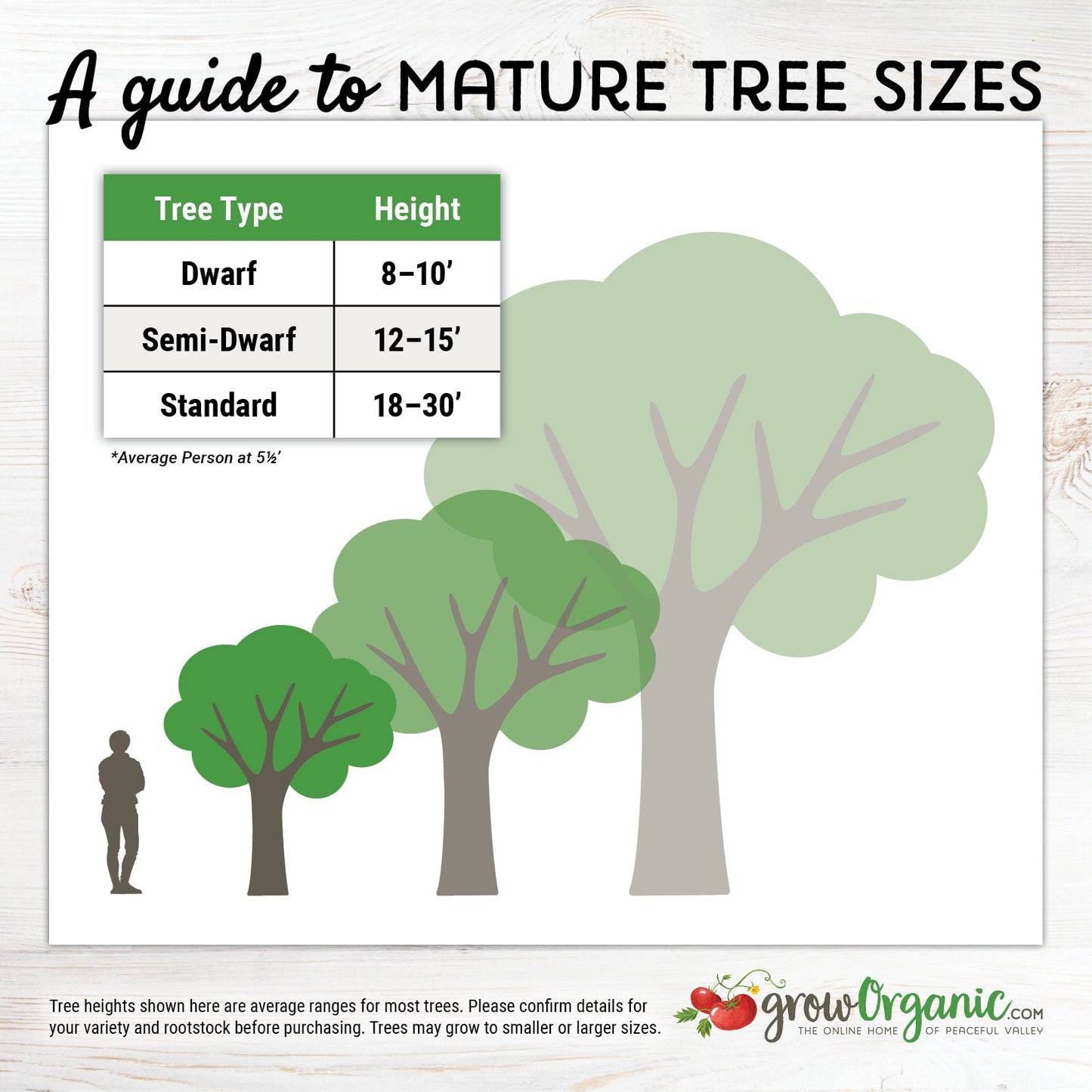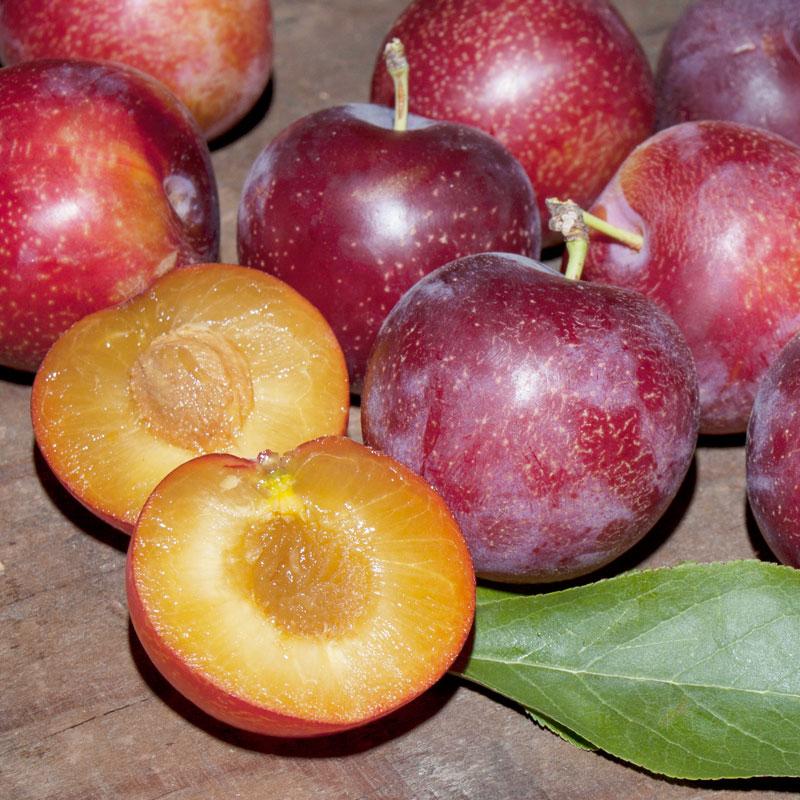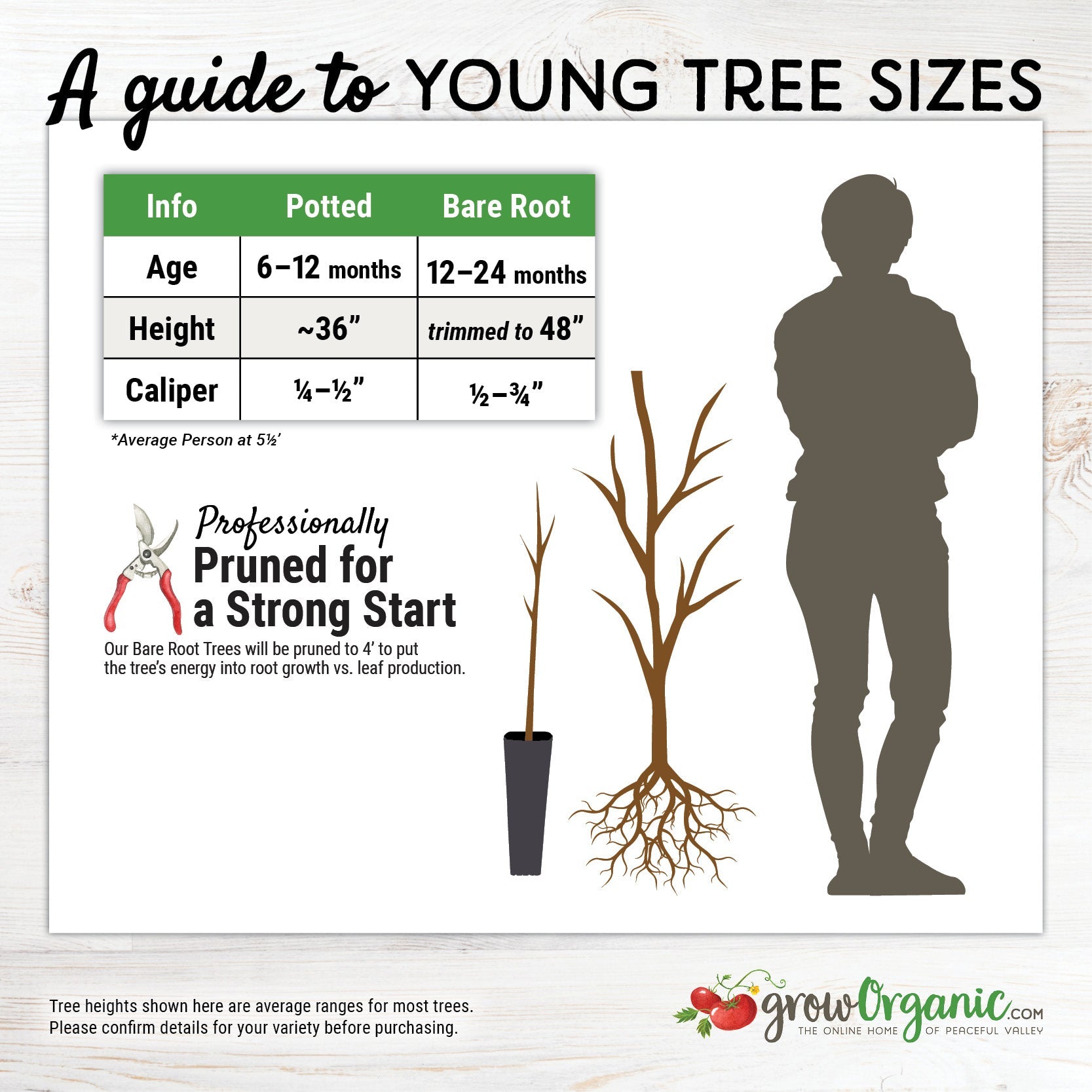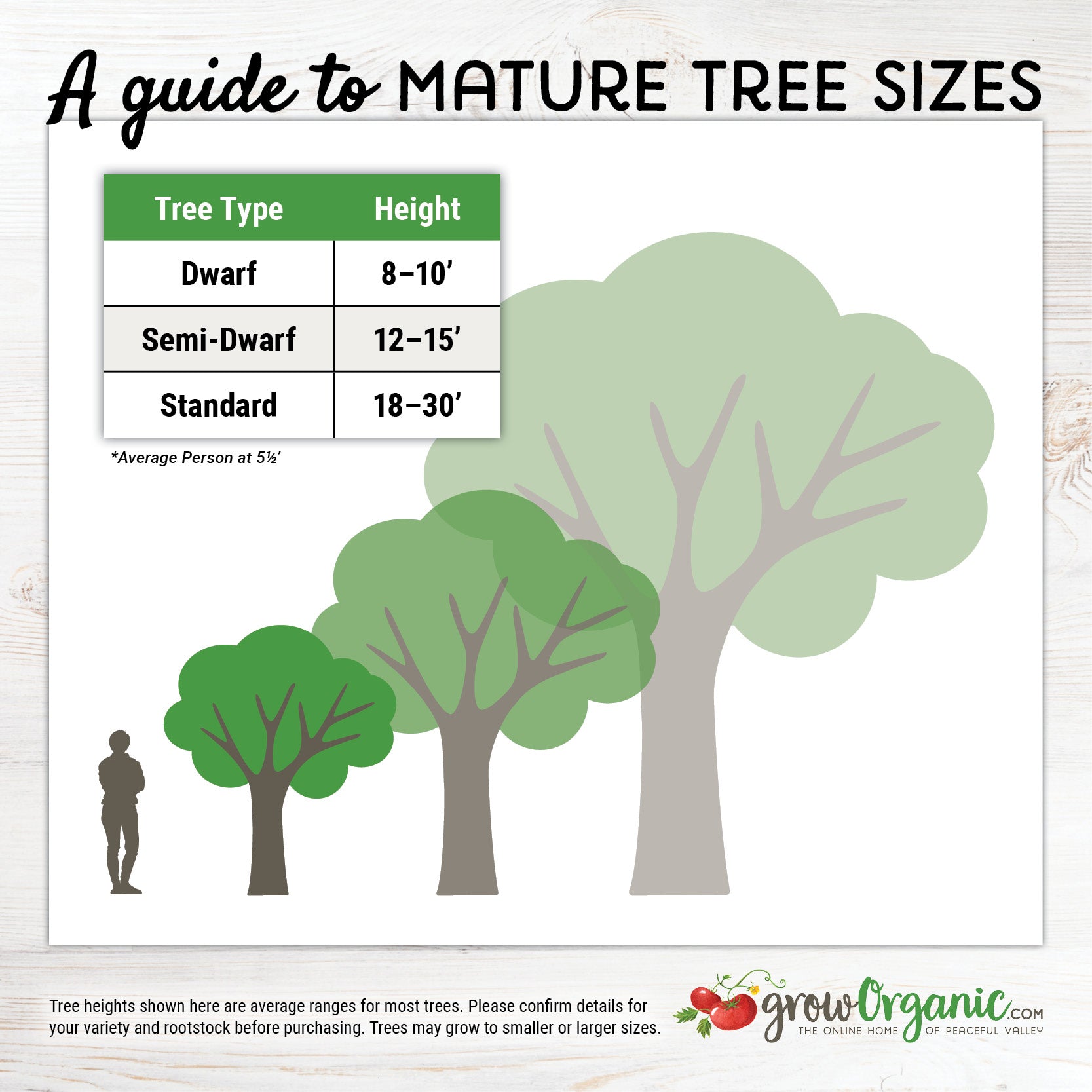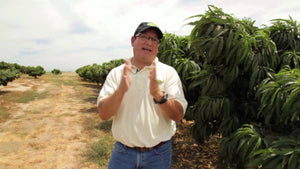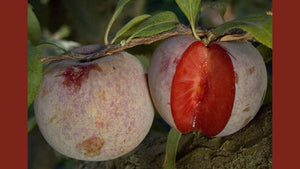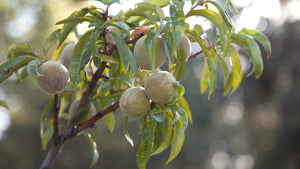Item Number: FT198
Sweet Treat Pluerry Tree
Sweet Treat Pluerry Tree
Deliciously Unique Flavor
Standard on Myrobalan 29 rootstock.
- Zones: 6-9
- Chill hours: 200-300
- Bloom Time: Late Mid-Season (Based on typical Central Valley California weather)
- Harvest: June 25 - July 30 (in Central Valley, California)
- Looks: Ping pong ball-sized with red skin and yellow flesh.
- Personality: Extremely sweet when fully ripe. Fruit does not drop when ripe, it just gets sweeter.
- Facts of note: New Zaiger variety. Top fruit at tastings for the last three years. Tree can grow to 20-25 feet, without pruning.
- Pollination: Pollinator needed; Burgundy or Santa Rosa plum, or Flavor King Pluot®
Sweet Treat Pluerry Tree: A Fusion of Flavor and Health
Discover the Sweet Treat Pluerry Tree - a delightful addition to your garden that combines the best of plums and cherries into a single, delicious fruit. In this comprehensive guide, we will explore the Sweet Treat Pluerry Tree, its origins, growing requirements, and the wonderful benefits of cultivating this unique fruit tree in your backyard.
What is a Sweet Treat Pluerry Tree?
The Sweet Treat Pluerry Tree, scientifically known as Prunus domestica x Prunus avium, is a hybrid fruit tree that brings together the characteristics of two beloved stone fruits: plums and cherries. This innovative crossbreed is the result of years of selective breeding and combines the sweet, juicy qualities of plums with the tartness and distinctive flavor of cherries. The result? A fruit that is truly the best of both worlds.
Origins of the Sweet Treat Pluerry Tree
The Sweet Treat Pluerry Tree is a product of the modern fruit breeding industry, created to provide fruit enthusiasts with a unique and exciting addition to their orchards. This hybrid variety was developed to capture the delicious flavor of cherries and plums while also offering disease resistance and adaptability to different growing conditions.
Growing Requirements
If you are considering adding a Sweet Treat Pluerry Tree to your garden, it's essential to understand its growing requirements. Here are some key factors to consider:
Climate: Sweet Treat Pluerry Trees thrive in regions with temperate climates. They require a certain number of chilling hours during the winter to ensure proper fruit development.
Sunlight: These trees prefer full sun, so choose a location in your garden that receives at least 6-8 hours of direct sunlight each day.
Soil: Well-drained soil is crucial for the success of your Sweet Treat Pluerry Tree. Loamy soil with a slightly acidic to neutral pH level is ideal. Ensure good drainage to prevent waterlogged roots.
Pollination: Most Pluerry trees are not self-fertile, which means you will need to plant at least one other compatible plum or cherry tree nearby for cross-pollination. Be sure to check the specific pollination requirements for your chosen variety.
Pruning: Regular pruning is necessary to maintain the shape and size of the tree, promote air circulation, and encourage fruit production.
The Sweet Treat Pluerry Fruit
The Sweet Treat Pluerry fruit is the star of the show, and it does not disappoint. Here are some characteristics that make it a standout addition to your garden:
Flavor: As the name suggests, the Sweet Treat Pluerry offers a delectable blend of sweetness and tartness. The taste is reminiscent of plums and cherries, with a juicy and refreshing profile that is perfect for eating fresh or incorporating into various culinary creations.
Versatility: The fruit can be used in a wide range of culinary applications. From jams and jellies to pies, cobblers, and even cocktails, the Sweet Treat Pluerry's unique flavor adds a delightful twist to your favorite recipes.
Nutritional Value: Sweet Treat Pluerry fruit is not only delicious but also nutritious. It is rich in vitamins, antioxidants, and dietary fiber, making it a healthy choice for snacking and cooking.
Benefits of Growing a Sweet Treat Pluerry Tree
Cultivating a Sweet Treat Pluerry Tree in your garden offers numerous benefits:
Unique Flavor: You get to enjoy the distinctive taste of plums and cherries in a single fruit, offering a unique and delightful eating experience.
Homegrown Delights: Growing your own Sweet Treat Pluerry tree allows you to enjoy fresh, pesticide-free fruit right from your backyard.
Nutritional Value: The fruit is not only tasty but also nutritious, providing your family with a healthy and flavorful addition to their diet.
Gardening Satisfaction: Planting and nurturing a Sweet Treat Pluerry Tree can be a rewarding gardening experience, and it adds beauty to your outdoor space.
The Sweet Treat Pluerry Tree is a remarkable addition to any garden. With its unique flavor, versatility in the kitchen, and nutritional benefits, this hybrid fruit tree offers a delightful and health-conscious choice for fruit enthusiasts and gardeners alike. So, why not consider planting a Sweet Treat Pluerry Tree and savoring the fusion of plums and cherries in your own backyard?
Visit our Fruit Tree Central for a listing of all our fruit tree videos and articles.
Visit Tree Characteristics for a listing of all our fruit & nut tree growing characteristics.


Check Your Zone Compatibility:
Compatible with your zone.
Growing Zone for
,

Our Guarantee To You
Since 1976, we've served our customers at every stage of growing. Please contact us at any time. We are happy to support and assist you.
Description
Description
Standard on Myrobalan 29 rootstock.
- Zones: 6-9
- Chill hours: 200-300
- Bloom Time: Late Mid-Season (Based on typical Central Valley California weather)
- Harvest: June 25 - July 30 (in Central Valley, California)
- Looks: Ping pong ball-sized with red skin and yellow flesh.
- Personality: Extremely sweet when fully ripe. Fruit does not drop when ripe, it just gets sweeter.
- Facts of note: New Zaiger variety. Top fruit at tastings for the last three years. Tree can grow to 20-25 feet, without pruning.
- Pollination: Pollinator needed; Burgundy or Santa Rosa plum, or Flavor King Pluot®
Sweet Treat Pluerry Tree: A Fusion of Flavor and Health
Discover the Sweet Treat Pluerry Tree - a delightful addition to your garden that combines the best of plums and cherries into a single, delicious fruit. In this comprehensive guide, we will explore the Sweet Treat Pluerry Tree, its origins, growing requirements, and the wonderful benefits of cultivating this unique fruit tree in your backyard.
What is a Sweet Treat Pluerry Tree?
The Sweet Treat Pluerry Tree, scientifically known as Prunus domestica x Prunus avium, is a hybrid fruit tree that brings together the characteristics of two beloved stone fruits: plums and cherries. This innovative crossbreed is the result of years of selective breeding and combines the sweet, juicy qualities of plums with the tartness and distinctive flavor of cherries. The result? A fruit that is truly the best of both worlds.
Origins of the Sweet Treat Pluerry Tree
The Sweet Treat Pluerry Tree is a product of the modern fruit breeding industry, created to provide fruit enthusiasts with a unique and exciting addition to their orchards. This hybrid variety was developed to capture the delicious flavor of cherries and plums while also offering disease resistance and adaptability to different growing conditions.
Growing Requirements
If you are considering adding a Sweet Treat Pluerry Tree to your garden, it's essential to understand its growing requirements. Here are some key factors to consider:
Climate: Sweet Treat Pluerry Trees thrive in regions with temperate climates. They require a certain number of chilling hours during the winter to ensure proper fruit development.
Sunlight: These trees prefer full sun, so choose a location in your garden that receives at least 6-8 hours of direct sunlight each day.
Soil: Well-drained soil is crucial for the success of your Sweet Treat Pluerry Tree. Loamy soil with a slightly acidic to neutral pH level is ideal. Ensure good drainage to prevent waterlogged roots.
Pollination: Most Pluerry trees are not self-fertile, which means you will need to plant at least one other compatible plum or cherry tree nearby for cross-pollination. Be sure to check the specific pollination requirements for your chosen variety.
Pruning: Regular pruning is necessary to maintain the shape and size of the tree, promote air circulation, and encourage fruit production.
The Sweet Treat Pluerry Fruit
The Sweet Treat Pluerry fruit is the star of the show, and it does not disappoint. Here are some characteristics that make it a standout addition to your garden:
Flavor: As the name suggests, the Sweet Treat Pluerry offers a delectable blend of sweetness and tartness. The taste is reminiscent of plums and cherries, with a juicy and refreshing profile that is perfect for eating fresh or incorporating into various culinary creations.
Versatility: The fruit can be used in a wide range of culinary applications. From jams and jellies to pies, cobblers, and even cocktails, the Sweet Treat Pluerry's unique flavor adds a delightful twist to your favorite recipes.
Nutritional Value: Sweet Treat Pluerry fruit is not only delicious but also nutritious. It is rich in vitamins, antioxidants, and dietary fiber, making it a healthy choice for snacking and cooking.
Benefits of Growing a Sweet Treat Pluerry Tree
Cultivating a Sweet Treat Pluerry Tree in your garden offers numerous benefits:
Unique Flavor: You get to enjoy the distinctive taste of plums and cherries in a single fruit, offering a unique and delightful eating experience.
Homegrown Delights: Growing your own Sweet Treat Pluerry tree allows you to enjoy fresh, pesticide-free fruit right from your backyard.
Nutritional Value: The fruit is not only tasty but also nutritious, providing your family with a healthy and flavorful addition to their diet.
Gardening Satisfaction: Planting and nurturing a Sweet Treat Pluerry Tree can be a rewarding gardening experience, and it adds beauty to your outdoor space.
The Sweet Treat Pluerry Tree is a remarkable addition to any garden. With its unique flavor, versatility in the kitchen, and nutritional benefits, this hybrid fruit tree offers a delightful and health-conscious choice for fruit enthusiasts and gardeners alike. So, why not consider planting a Sweet Treat Pluerry Tree and savoring the fusion of plums and cherries in your own backyard?
Visit our Fruit Tree Central for a listing of all our fruit tree videos and articles.
Visit Tree Characteristics for a listing of all our fruit & nut tree growing characteristics.
An interspecific cross between a plum and a sweet cherry. Sweet Treat is the first of its kind, the Pluerry™: a new fruit type from the genius of Floyd Zaiger. This taste-test favorite is a complex interspecific hybrid, predominantly of plum and cherry, combining the sweetness of a cherry with that summer fresh plum zing. Much larger than a cherry, this precocious and prolific variety will hang on the tree for over a month, and the colorful fruit make Sweet Treat a true ornamental. Browse all our pluerry trees for sale.
Please Note: Although most of our bare-root trees arrive to our warehouse in mid-December, there are a few varieties that will not arrive until mid-January. If you order any of those varieties along with varieties that arrive in mid-December, your order will be delayed for shipment until mid-January. If you'd like us to split your shipments, please contact us at (888) 784-1722 or orderdesk@groworganic.com. Additional shipping charges will apply.
Shipping Information
Shipping Information
Cannot ship to the following states: HI, AK, PR, GU, VI
Cannot ship via USPS.
Cannot ship via SmartPost.
Shipping Weight: 5.0 lb
Dimensions: 55.5"L x 7.3"W x 2.75"H
Features
Features
- Flavor Pick
- Patented Variety
Characteristics
Characteristics
Planting & Care
Planting & Care
Useful Information
Useful Information
Guarantee
Guarantee
Limited Dormant Tree & Plant Guarantee
* Claim deadline is June 15th
We guarantee that your dormant tree or plant will arrive in good, viable condition. If your tree arrives in substandard condition, notify us within 3 days of delivery. Please email pictures of the box, inside packaging, the tree and its roots to helpdesk@groworganic.com. We will investigate your claim and process a request to exchange or refund the damaged product.
If your dormant tree or plant has not grown new leaves by June 15th, you may be eligible for our Limited Dormant Tree & Plant Guarantee. This guarantee provides for a store credit for the purchase price of the tree, excluding shipping. Please see the Instructions below.
Important Dates:
- April 1st Dormant trees/plants must be planted in the ground
- May 15th Perform scratch test, if no new leaves have grown
- June 15th Deadline to apply for a dormant tree/plant credit
All required documentation must be received by June 15th for your claim to be considered. Claims or documentation received after June 15th will be denied, without exception. Instructions listed below
Terms and Conditions
We cannot guarantee that your tree or plant will remain alive and healthy after it is received, or bear fruit as there are too many variables in your environment that are beyond our control (i.e. soil preparation, weed and pest control, proper irrigation, chill hours, compatible hardiness for your growing zone, proper choice of pollinator, extreme weather, rodent damage, disease, etc.).
We cannot guarantee that we will be able to provide a replacement tree/plant of the same species either that same growing season or in future years. Customers are responsible for all shipping fees associated with replacement trees and plants.
If we determine that the tree you purchased directly from us is not viable, we will issue you a store credit (not a refund) for the purchase price of the affected dormant tree or plant. Shipping is not included in the dormant tree/plant guarantee. Store credits can be used to purchase any product we sell and are valid for use only until July 1st of the following year.
Historically, 98% of our dormant trees and plants grow and thrive when they have been cared for and planted using our growing guides. Dormant trees and plants must be planted in the ground by April 1st in order to be eligible for credit. If the ground in your area is still frozen solid, you may temporarily plant your tree or plant in a pot.
Potted, non-dormant trees or plants are excluded from this guarantee as they are not dormant at the time of shipment. Evergreen trees such as citrus, avocado and olive trees are not available for credit under the Dormant Tree and Plant Guarantee.
Instructions
We guarantee that your dormant fruit tree or plant will leaf out, if you care for it according to our growing guides. In the unlikely event that your dormant tree or plant does not have leaves by May 15th, follow these simple steps to apply for a store credit:
Before you call or email, please perform a “scratch test” to determine if the tree or plant is still alive. This video shows how to check for live tissue under the bark. Scratch tests need to be done a few inches above and below the graft.
Green Cambium Layer / Living Trees
If the cambium layer under the bark is green, give your tree a little more time. It is still alive, but hasn’t come out of dormancy yet. Check to make sure that it is getting the right amount of deep root water, enough sunlight and that the weather is warm enough for that type of tree/plant to come out of dormancy. Every tree has its own personality and will come out of dormancy at different times. Be sure to submit the required documentation listed below by June 15th, if it doesn’t grow leaves.
Brown Cambium Layer / Dead Trees
If the scratch test shows a brown cambium layer or if your dormant tree/plant doesn’t have leaves by June 1st, please email us at helpdesk@groworganic.com. All required documentation listed below must be received by June 15th for your claim to be considered. To be considered for the guarantee claim, all required documentation must be received by June 15th. Incomplete submissions will be denied.
Required Documentation
- Order number
- Name of dormant tree/plant and the quantity affected
- Photos of each tree or plant showing:
- The roots (tree or plant must be pulled out of the ground)
- The scratch test areas
- The entire tree/plant
We reserve the right to not issue credit for items that have already been replaced. We also reserve the right to require photographic evidence that the tree/plant was not killed by root rot, rodent or mechanical damage.
Share
